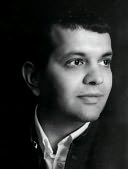- Shopping Bag ( 0 items )
From Barnes & Noble
Barnes & Noble Discover Great New Writers"Bombay is the future of urban civilization on the planet. God help us," writes Mehta, in this startling, provocative look at "the biggest, fastest, richest city in India." Mehta spent much of his childhood in Bombay (now Mumbai) before moving to New York with his family. As an adult, he returned there only to be confounded as he sought to reconcile the city of his youth with the teeming, filthy, and yet sometimes alluringly exotic metropolis before him.
What he finds is a city where one always waits in line, yet one is always in a hurry. Where one cannot function without complicity in an intricate system of bribery. Where one must learn (precisely) in which place commuters must stand to exit a train, lest they be trampled by the hordes rushing into the car before it speeds away.
Through Mehta's eyes, readers observe the individuals who call Bombay home, including the writer himself. We meet a dancer who works in Bombay's sex industry and a director navigating the complex world of Bollywood. Corrupt officials parade by, as do gang members who nonchalantly affirm their murderous pasts. As a traveler to Bombay, Mehta felt he was watching the "extreme" of life. Fortunately, readers can share his wildly entrancing journey back "home" from the comfort of their own, more tranquil households. (Holiday 2004 Selection)





Overview
A native of Bombay, Suketu Mehta gives us an insider’s view of this stunning metropolis. He approaches the city from unexpected angles, taking us into the criminal underworld of rival Muslim and Hindu gangs; following the life of a bar dancer raised amid poverty and abuse; opening the door into the inner sanctums of Bollywood; and delving into the stories of the countless villagers who come in search of a better life and end up living on the sidewalks.
Second-Place ...